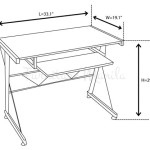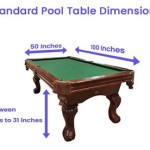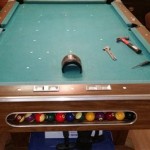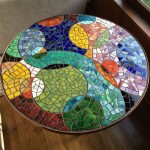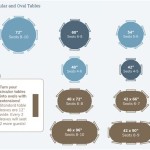Expandable Wood Outdoor Dining Table: A Comprehensive Guide
An expandable wood outdoor dining table offers a versatile solution for homeowners who enjoy entertaining guests outdoors. These tables provide the flexibility to accommodate both small intimate gatherings and larger celebrations. The inherent beauty and durability of wood, combined with the functionality of an expandable design, make them a popular choice for patios, decks, and gardens. This article delves into the various aspects of expandable wood outdoor dining tables, encompassing material considerations, expansion mechanisms, styles, maintenance, and factors to consider when making a purchase.
Understanding the Materials: Types of Wood for Outdoor Use
The choice of wood is paramount when selecting an expandable outdoor dining table. Different wood species possess varying levels of resistance to the elements, insect infestation, and decay. These factors directly impact the longevity and aesthetic appeal of the furniture.
Teak: Often regarded as the gold standard for outdoor furniture, teak is a dense, close-grained hardwood naturally rich in oils and rubber. These natural oils provide exceptional resistance to moisture, preventing warping, cracking, and rotting. Teak is also highly resistant to insects and fungi, further contributing to its durability. While initially exhibiting a warm, golden-brown hue, teak will naturally weather to a silver-gray patina over time if left untreated. This patina is purely aesthetic and does not compromise the wood's structural integrity. Teak requires minimal maintenance, typically involving only occasional cleaning to remove dirt and debris.
Cedar: Cedar is another popular choice for outdoor furniture due to its natural resistance to decay and insects. It contains natural oils that act as a preservative, making it suitable for outdoor environments. Cedar is less dense than teak and is relatively lightweight, making it easier to move around. It possesses a distinctive aromatic scent, which some find appealing. Cedar can be stained or painted to match existing outdoor décor. Like teak, cedar will weather to a silver-gray color if left untreated. Regular cleaning and occasional application of a sealant can help preserve its original color and extend its lifespan.
Acacia: Acacia is a durable hardwood that is becoming increasingly popular for outdoor furniture. It is naturally resistant to rot and insects, owing to its density and oil content. Acacia is known for its attractive grain patterns and rich, warm tones. It is a more sustainable and often more affordable option compared to teak. Acacia requires similar maintenance to other hardwoods, including regular cleaning and occasional oiling to prevent drying and cracking.
Eucalyptus: Eucalyptus is a fast-growing hardwood that is often used as a sustainable alternative to other tropical hardwoods. It is relatively strong and durable, possessing a natural resistance to decay and insects. Eucalyptus is typically treated with preservatives to enhance its weather resistance. It features a reddish-brown color and a straight grain pattern. Regular cleaning and periodic application of a sealant are recommended to maintain its appearance and longevity.
Pressure-Treated Wood: While less aesthetically pleasing than natural hardwoods, pressure-treated wood is a cost-effective option for outdoor furniture. It is typically made from softwood, such as pine, which has been chemically treated to resist rot, decay, and insect infestation. Pressure-treated wood requires regular sealing and staining to protect it from the elements and maintain its appearance. Although durable when properly treated, it can be prone to warping and cracking over time, particularly in extreme weather conditions.
Expansion Mechanisms: Variety and Functionality
The expansion mechanism is a critical feature of an expandable wood outdoor dining table, determining how easily and effectively the table can be extended to accommodate additional guests. Several types of expansion mechanisms are commonly employed.
Butterfly Leaf: The butterfly leaf mechanism involves a leaf that is stored within the table itself, typically folding in half underneath the tabletop. When needed, the tabletop is separated in the middle, and the butterfly leaf is unfolded and locked into place. This mechanism is relatively simple to operate and allows for a seamless extension of the table surface. Butterfly leaves are typically the same width as the table, ensuring a consistent look when expanded.
Drop-In Leaf: Drop-in leaves are separate pieces of wood that are inserted into the table when it is extended. The tabletop is separated, and the drop-in leaf is placed in the gap. These leaves are often stored separately when not in use. Drop-in leaves can offer greater flexibility in terms of size and shape, allowing for multiple leaves to be added to accommodate larger gatherings.
Self-Storing Leaf: Similar to butterfly leaves, self-storing leaves are stored within the table. However, instead of folding in half, they typically slide out from underneath the tabletop or are hinged to swing into place. This mechanism can be particularly convenient, as the leaves are always readily available when needed.
Extension Rails: Some expandable tables utilize extension rails, which are metal tracks that allow the tabletop to slide apart. This mechanism is often used in conjunction with drop-in leaves or butterfly leaves. Extension rails provide a smooth and stable extension of the table surface, ensuring that it remains level and secure when extended.
The choice of expansion mechanism depends on personal preference, the size and design of the table, and the desired level of convenience. A well-designed mechanism should be easy to operate, providing a seamless and stable extension of the table surface.
Styles and Considerations: Design, Size, and Maintenance
Expandable wood outdoor dining tables are available in a wide range of styles to complement various outdoor living spaces. Considerations regarding size, design, and maintenance are essential for selecting the right table.
Design and Style: The design of an expandable outdoor dining table should align with the overall aesthetic of the patio or deck. Options range from traditional styles with ornate details to modern designs with clean lines and minimalist profiles. Consider the shape of the table – rectangular, oval, or round – and how it will fit within the available space. The finish of the wood is also an important consideration, as it can significantly impact the overall look of the table. Stain finishes can enhance the natural grain patterns of the wood, while painted finishes can add a pop of color to the outdoor space.
Size and Capacity: Determining the appropriate size of the table is crucial. Consider the number of people typically accommodated for outdoor dining. When not extended, the table should comfortably seat the average number of diners. When fully extended, it should accommodate the maximum number of anticipated guests. Measure the available space to ensure that the table, when fully extended, does not overcrowd the area.
Maintenance and Care: Regular maintenance is essential for preserving the beauty and longevity of an expandable wood outdoor dining table. Regardless of the wood species, cleaning the table regularly with mild soap and water is recommended to remove dirt, debris, and spills. For hardwoods like teak and cedar, occasional oiling can help to replenish natural oils and prevent drying and cracking. Teak oil or a specialized outdoor furniture oil can be used. Painting or staining may be needed to maintain the appearance of pressure-treated wood. Covering the table when not in use can protect it from the elements and extend its lifespan. During the off-season, storing the table indoors or in a covered area is advisable to prevent damage from harsh weather conditions.
Leg Design and Stability: The leg design contributes significantly to the table's stability and overall aesthetic. Sturdy legs are crucial for supporting the weight of the tabletop, especially when it is fully extended. Consider the style of the legs – straight, tapered, or curved – and how they complement the overall design of the table. Ensure that the legs are made from durable materials and are properly attached to the tabletop to prevent wobbling or instability.
Budget: The price of expandable wood outdoor dining tables can vary widely depending on the wood species, size, design, and construction quality. Establish a budget before beginning the search to narrow down the options. While it may be tempting to opt for a less expensive table, investing in a high-quality table made from durable materials will ultimately provide better value in the long run. Consider the long-term cost of maintenance and replacement when evaluating different options.
Selecting the right expandable wood outdoor dining table involves careful consideration of material, mechanism, style, and maintenance. By carefully evaluating these factors, a suitable table that will provide years of outdoor enjoyment can be found.

Portside Outdoor 76 5 In 106 Expandable Rectangle Dining Table Driftwood W Modern Sets

Portside Outdoor Expandable Dining Table 76 5 106 West Elm

Wilson 9pc Acacia Wood Dining Set With Expandable Table Teak Christopher Knight Home Target

Gdf Studio Cassia Outdoor Acacia Wood Expandable Dining Table U Shaped Brown 6 Person Com

Zoe Outdoor Expandable Acacia Wood Dining Table Natural Com

Portside Wood Outdoor Expandable Dining Table 76 5 106 Benches Set West Elm

Outdoor Expandable Rectangle Steel Dining Table Captiva Designs Target

Noble House Stamford Outdoor Acacia Wood Expandable Dining Table In Teak Com

Noble House Soro Gray Rectangular Expandable Acacia Wood Outdoor Dining Table 68314 The Home Depot

Portside Wood Outdoor Expandable Dining Table 76 5 106 Benches Set West Elm
Related Posts

